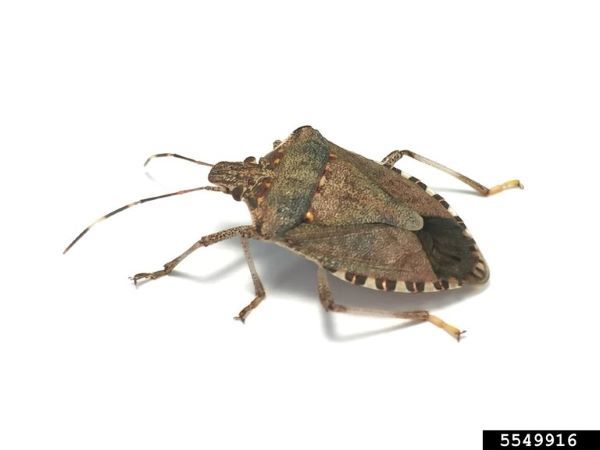Issue 13, October 8, 2021
Brown Marmorated Stink Bug
Brown marmorated stink bug (Halyomorpha halys; BMSB) is an introduced species that was first recorded in Illinois in 2010. BMSB can feed on over 300 species of plants. It can be a pest of fruits, vegetables, field crops and ornamental plants. It’s ornamental hosts include maple, oak, spirea, viburnum and rose, among many others. These insects have straw-like mouthparts that they use to suck fluids from plants. The resulting injury can look like discoloration or dead patches on leaves. In fruits and vegetables, injury can appear as discoloration, lesions or cat-facing.
In autumn, BMSB can also become a nuisance pest in homes. As the days shorten and temperatures cool, adult BMSB will begin to look for overwintering sites. While they would normally seek out crevices in the landscape, gaps in our homes can also provide shelter from the elements. They cannot reproduce inside homes but they can aggregate in homes and produce an unpleasant odor when they are roughly handled. Once they go dormant for the winter, they will not become active again until temperatures warm in the spring.

Brown marmorated stink bug (Halyomorpha halys), Kristie Graham, USDA ARS, Bugwood.org
BMSB can be identified by the pale banding on their antennae, the dark and light pattern along the edges of their abdomen and the smooth shoulder area near their head (image above). Many similar species have a saw-toothed or spiked shoulder area or lack banding on their antennae.
Control in ornamental plants:
Hand picking insects from plants and netting susceptible fruits are the first line of defense for protecting ornamental plants from BMSB. Netting can be a good option for keeping BMSB from injuring vegetables or ornamental fruits. Netting should be placed over the plants prior to fruiting, so this is something that can be done early in the season. Hand picking insects from affected plants or knocking them into soapy water can be done anytime and on any type of plant.
Control in and around the home:
The best way to prevent BMSB from entering homes is to focus on exclusion by sealing any gaps and repairing window screens. If BMSB find their way into homes, they do not cause damage and can be physically removed by vacuuming, dropping them into a cup of soapy water or smashing them. If aggregations on the outside of the house become a problem, pest control companies may be able to identify and fill gaps or provide a perimeter treatment, though the treatment must be timed correctly to be effective.
Author:
Sarah Hughson